Tibetan Ewer or Kettle, seventeenth-eighteenth century
Important Monk’s Cap Tea Kettle with ——- Monastery Inscription
Shigatse, Tibet
17th-18th century
height: 57cm
This massive kettle is for serving tea to monks in a communal dining hall.
Two lines of fine, formal (
u-chen) Tibetan script runs around the front of the kettle. The inscription reveals that the that kettle was commissioned for the monks of the —– monastery in Shigatse. The names of the patron and the artisan are given. (See below for the full translation.)
—– monastery, which was founded in 1447 by —–, the first ——. It became one of the biggest and richest in Tibet and had accommodation for more than 4,000 monks. The monastery complex is located about two kilometres outside Shigatse, Tibet’s second city, and is the seat of the ——, who was second only to the ——- in secular and religious importance. Each —–‘s successor is presumed to be the reincarnation of his predecessor and each is found in a similar manner to the search for the ——‘s successor.
The kettle has a brass spout that rises from the base; a very thick neck; a bulbous belly with a wide, flattened shoulder; a circular flared foot; a large curved handle at the back, and a secondary handle on the side to better balance the great weight of the kettle when full; and a high, curved brim in the form of a monk’s cap. Utilitarian in nature, it nonetheless has an aesthetic quality afforded by this latter feature.
The kettle also has an old mend on one side to the rear (see the photographs). The patina and wear to this mend suggest the great age of this kettle – that the metal could have worn through and needed such a repair in the first instance already suggests its age but to then have very obvious further wear to the mend suggests even greater age. The mend and wear are in a curious place. Either it is from pouring whereby, on account of the weight of the kettle when full, the monk responsible for pouring would have needed to hold it against his thigh to balance it whilst pouring with the wear corresponding to where the kettle would have rested against his though, or else the wear might have come from rubbing whilst the kettle was strapped to the side of a mule when it was being transported, perhaps for some of the many councils that were held in Tibet in temporary tent ‘villages’.
The script in Romanised Tibetan says:
Which translates as:
Although utilitarian in nature, the form of the kettle has an aesthetic quality – the brim of the kettle is in the form of a monk’s cap rim. The kettle also is in two metals – copper and brass. Overall, it is a monumental item with a fine inscription.
References
Shanghai Museum, Treasures from Snow Mountains: Gems of Tibetan Cultural Relics, Shanghai Museum, 2001.
Inventory no.: 818
SOLD
‘This vessel made of red sandal-wood and its essence
May bring merits to all sentient beings
And accumulating the merits and insights
Thus leading to the realm of Buddhahood.’
This copper kettle is dedicated to Tashi Lhunpo monks by Jagyabpa Depa Namgyal Sherab, design sculptured by Drulrig kyi Bhendhe.
Jon-mar ley Drub Jon Shing Nying-khue sNod Trun pae Ge wey Dhag Shen Dro Wa Kun
Nyur-dhu Sonam Yeshey Tsok Zog Ne Jang-chup Nying-poe Sa-la Reg-Gyur-Chik
Chey-pa-Dhi-yang Ja-Gyabpa Depa Namgyal Sherab Kyi Tae-lhun Dhu-Tsok-su Zang-Tir buel Jor Gyi pey Kha-Jang-dhu Drul-rig-kyi Bhendheyi Koed
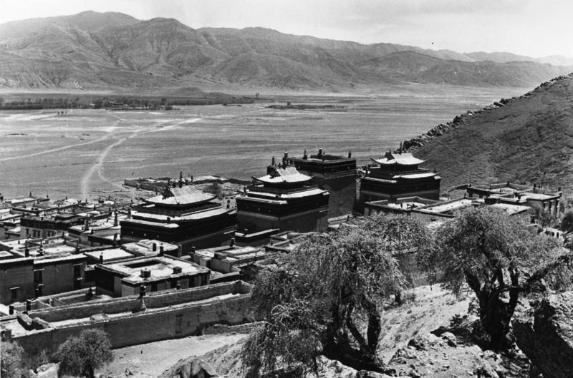
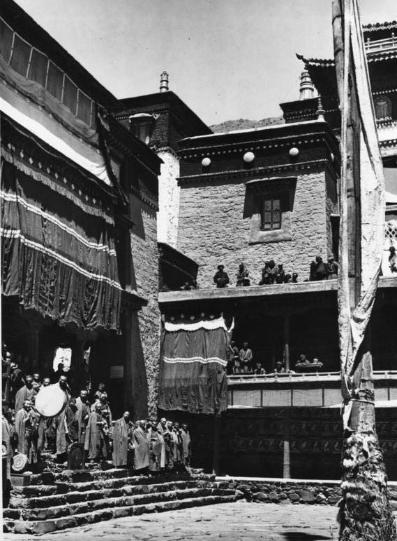
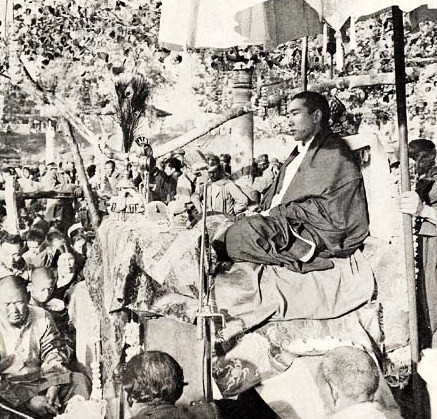

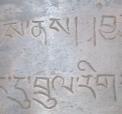
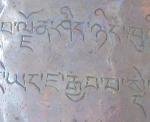
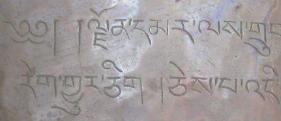
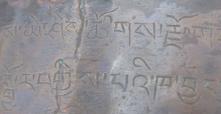
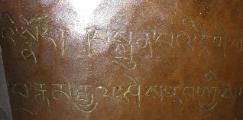
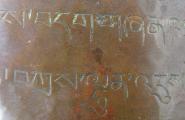

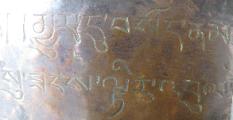
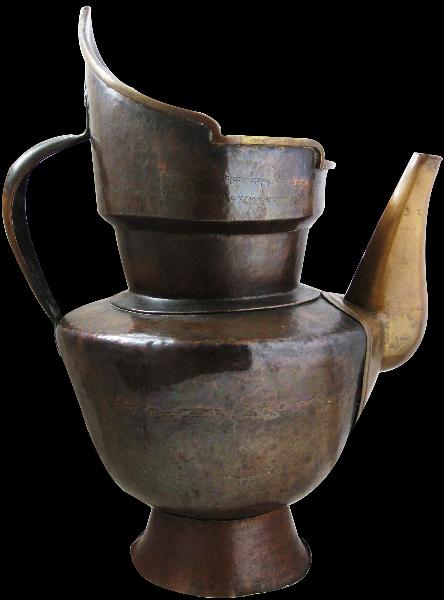
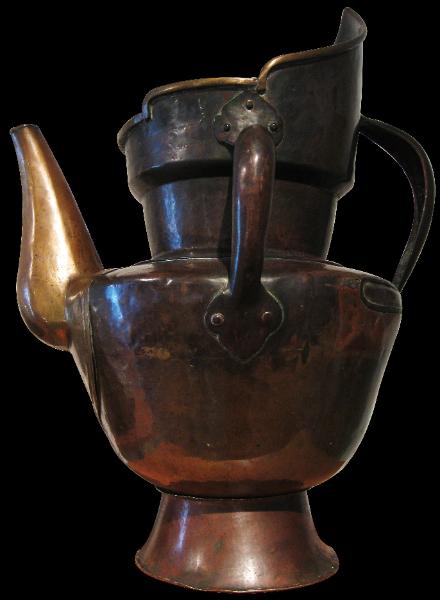
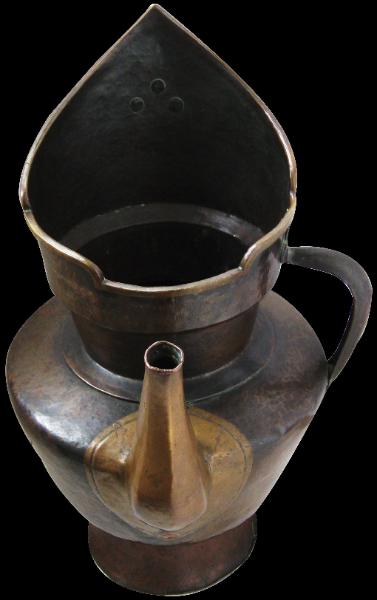
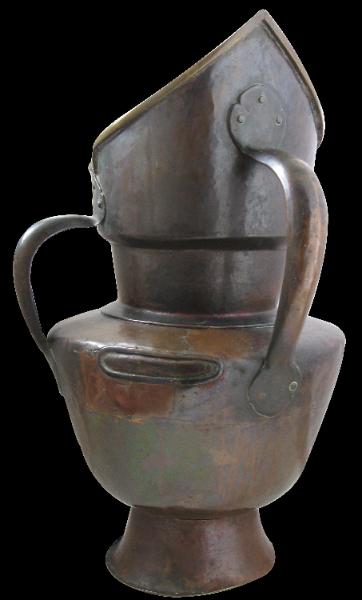
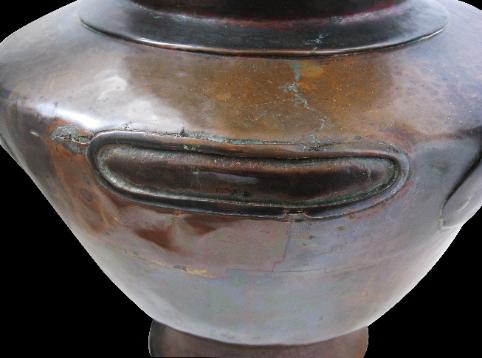
Two views of the —– monastery, circa 1930.
The —–, circa 1930.
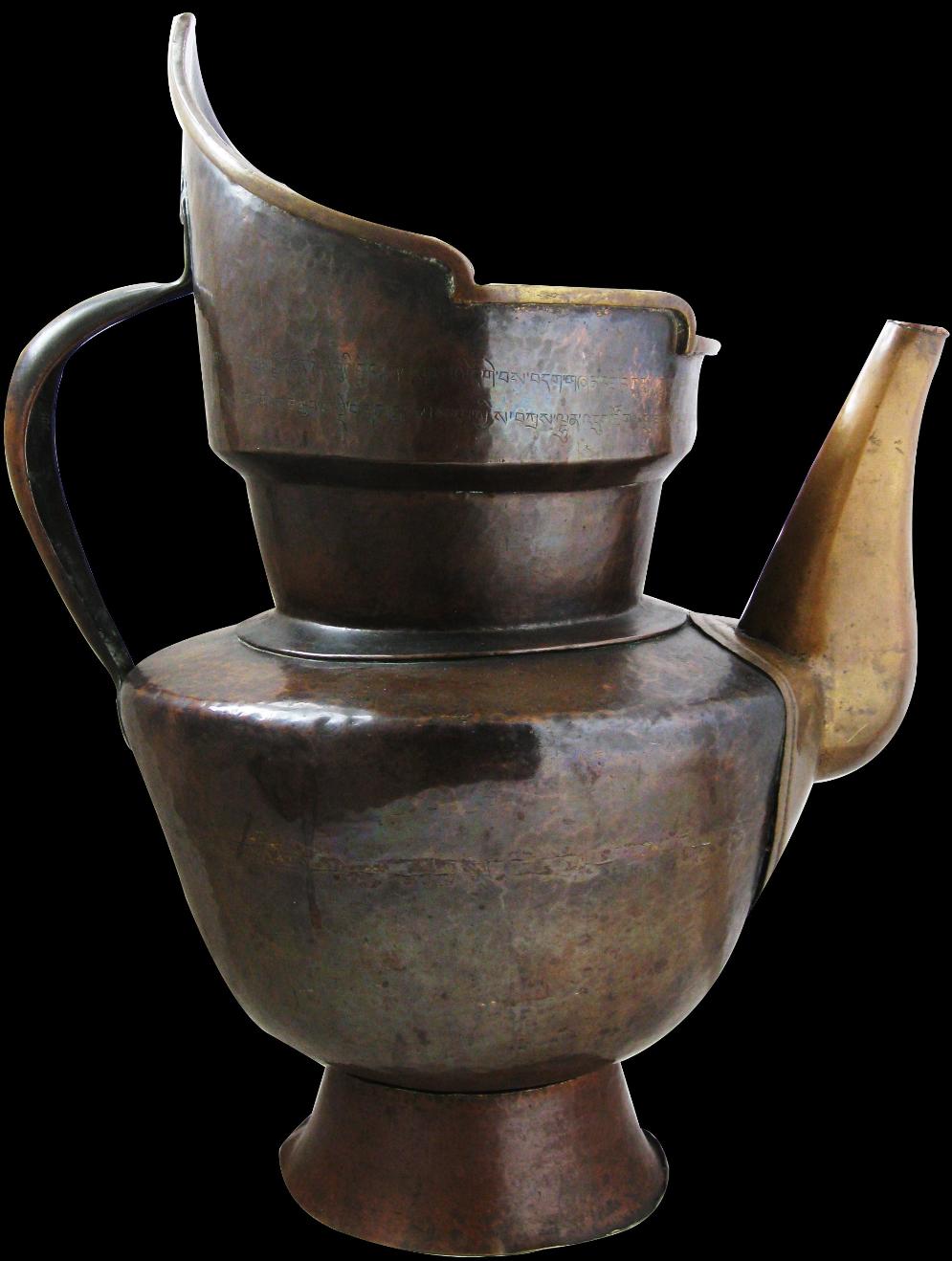
The script as it wraps around the kettle:

